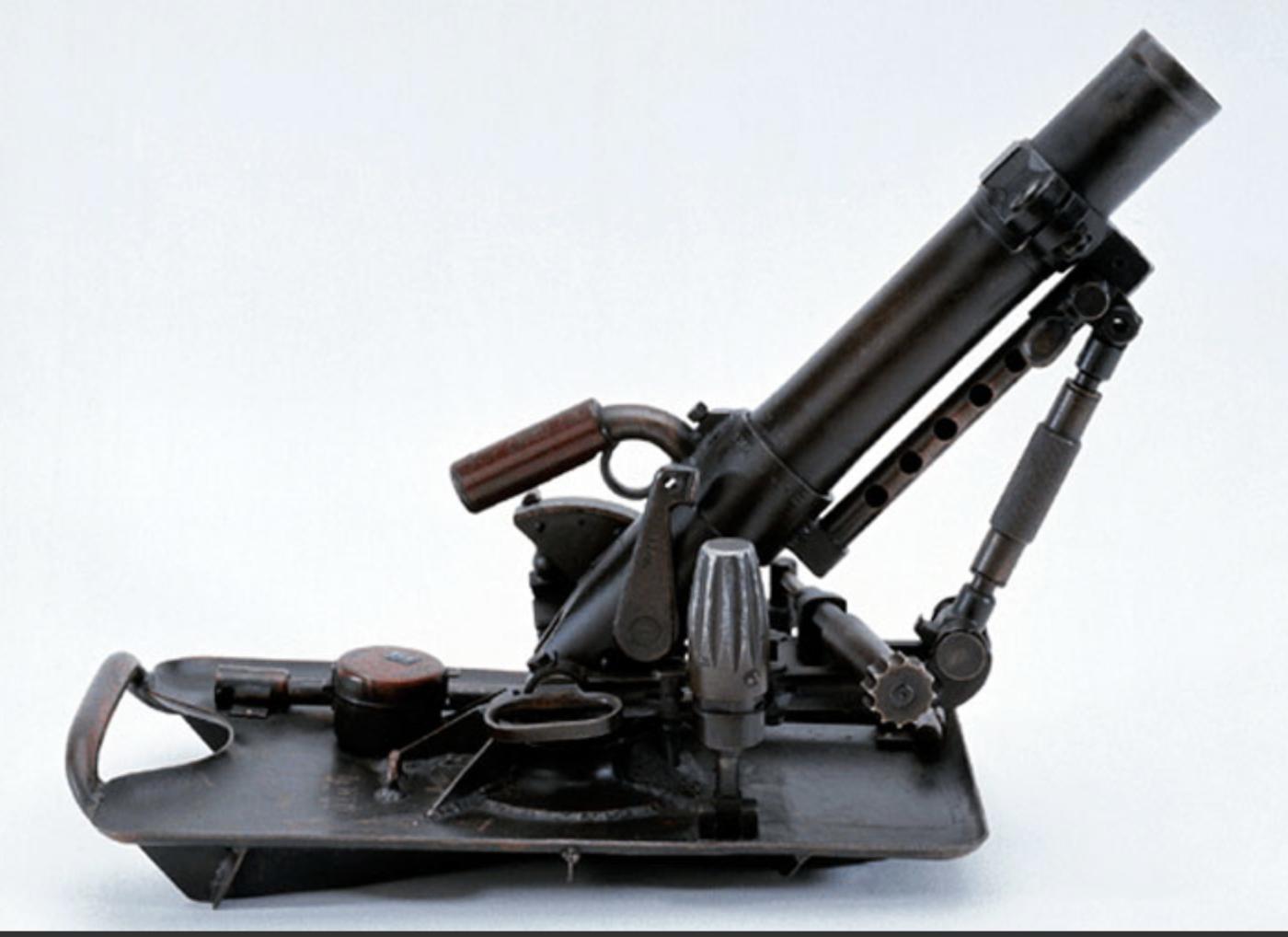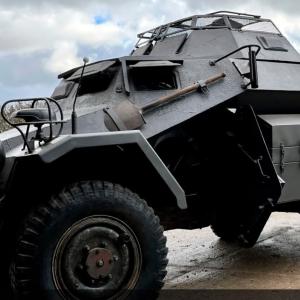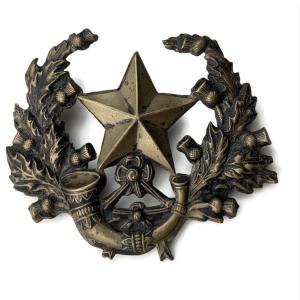
Granatwerfer 36 Mortar
The Granatwerfer 36 was Germany’s standard light platoon mortar at the start of World War II. Intended to give infantry small-unit organic indirect fire, it was compact and light enough to be carried by a small crew and quickly deployed to give immediate close support. Its small size and low weight made it valuable for dashing, short-range harassment and suppression, allowing infantry squads to lob explosive or smoke rounds without calling for heavier artillery. The weapon’s components were simple: a smoothbore tube, a small circular baseplate, and a sighting device; it required no complex aiming gear and could be set up and fired within a minute or two by trained soldiers.
Portability was the defining strength of the mortar. The complete outfit could be broken down and carried by two or three men; this made it well suited to mobile operations, assaults, and situations where heavier mortars or artillery could not be brought forward. The light weight and small size also made it useful in rough terrain — mountain units and airborne troops valued small, reliable weapons they could move by hand. Because of its simplicity the weapon could also be taught quickly to conscripts and replacement troops, which was important as German units expanded and sustained casualties.
In operational use the 5 cm mortar provided short-range indirect fire. It fired a small, fin-stabilized mortar bomb (high explosive was the most common), as well as smoke and illumination rounds. Typical technical characteristics commonly cited in period sources and postwar summaries list the caliber as 50 mm, a bomb weight under 1 kilogram, and a practical maximum range on the order of a few hundred metres to roughly half a kilometre depending on charge and firing angle — effective engagement ranges were usually well below maximum range because the small projectile had limited explosive power and was affected by wind and terrain. Its rate of fire was comparatively high for a small mortar, allowing several rapid rounds to be put down in support of an assault or to suppress an enemy position. Accuracy was acceptable for its role: it was intended for area effects rather than pinpoint strikes, and its small charge meant dispersion and range limitations made it unsuitable for destroying hardened positions but effective against exposed infantry and light fieldworks.
German infantry and several specialist formations used the mortar widely. It was issued at platoon and company level in regular infantry units so that small groups could call for immediate indirect fire. Mountain troops (Gebirgsjäger) and airborne forces (Fallschirmjäger) also employed the weapon because its light weight matched their mobility needs. Reconnaissance and security detachments frequently took it along for self-contained firepower. As the war progressed, shortages and evolving tactical demands led to modifications in light-mortar doctrine and to alternative weapons replacing or supplementing the 5 cm weapon in many units, but in the early and mid-war years it was a common sight with frontline infantry.
Ammunition types included high-explosive (HE) fragmentation rounds as the primary combat munition, smoke rounds for concealment and signaling, illumination rounds for night operations, and inert/training rounds for instruction. The HE round was small compared with heavier infantry mortars, so its lethal radius was limited; the weapon’s utility lay more in suppression, enabling maneuver, and creating opportunity than in outright destruction. Crews typically carried a supply of ready rounds in bandoliers or crates so a burst of rapid fire could be delivered when needed.
Design and manufacture of German weapons in the 1930s and 1940s often involved military technical bureaus working with private firms to produce the final item. The 50 mm mortar was a product of German ordnance development in the mid-1930s and entered service in 1936; manufacture was undertaken by several industrial firms under government contracts to meet army demand. Production numbers and the roster of manufacturers varied over the course of the war as plants shifted priorities and as the German economy adapted to losses and changing needs.
The mortar’s simplicity benefitted training, logistics and frontline effectiveness: there were few moving parts to fail, ammunition types were straightforward, and the weapon could be maintained in the field with basic tools. Tactically, it allowed small German infantry elements to project explosive and obscuring effects beyond rifle range without waiting for artillery support — a particularly valuable capability in mobile, close fighting such as assaults on villages, woods, and ridgelines.
Limitations flowed from the small size. The shells carried limited explosive filler and delivered modest fragmentation effects, so the weapon could not replace heavier crew-served mortars or artillery when substantial destructive power was required. Its light projectile was more susceptible to wind and other environmental effects than larger-caliber mortars, which reduced accuracy at longer ranges. As a consequence, later in the war German doctrine and production increasingly emphasized larger-caliber mortars and rocket systems for more destructive firepower, while the 5 cm system remained valuable for its mobility and responsiveness until it was gradually phased out or supplemented in many formations.










